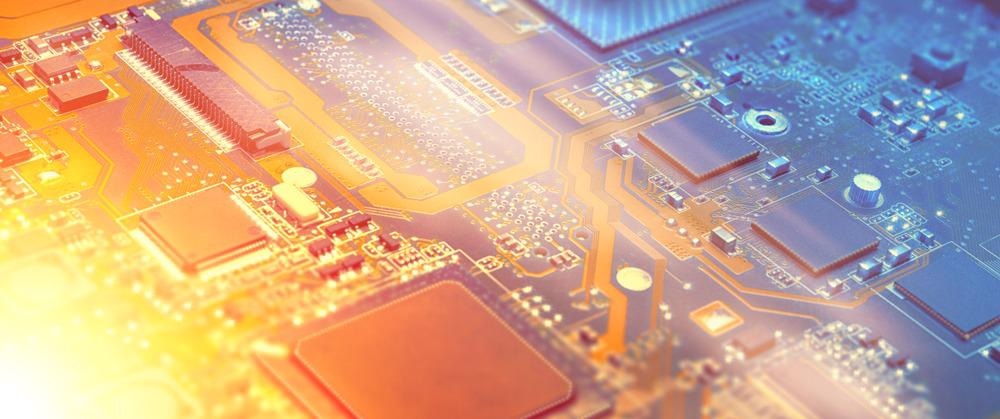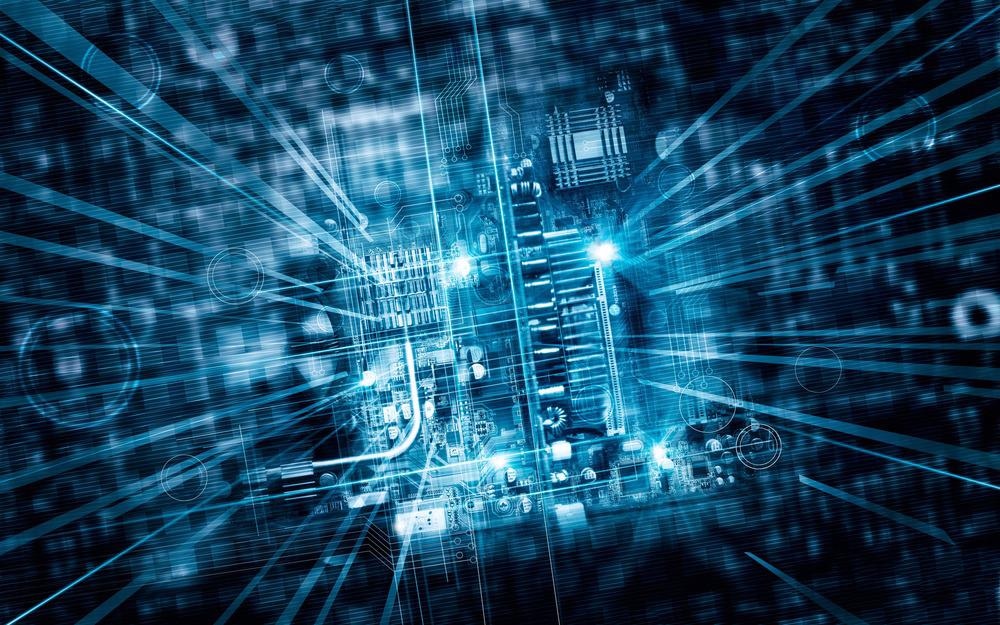Scientists have established a new microcavity construction technique that facilitates exciton transport at room temperature. The new method utilizes a novel ‘sandwich style’ fabrication process that places a one-atom-thin semiconductor between two mirrors. The results of the study, conducted by Australian researchers, marks a significant step toward the development of ultra-low energy electronics.

Image Credit: anyaivanova/Shutterstock.com
How do Conventional Electronics Work and What Do They Rely On?
Electrical energy is achieved via the movement of electrons (charged particles) through a circuit. Energy transport in conventional electronics relies on a flow of these electrons or ‘holes’ that exist in the absence of an electron (e.g., a positively charged quasiparticle).
Currently, the field of electronics is set to undergo a significant shift. Research has highlighted the potential of developing electronics that rely on excitons rather than electrons because they are theoretically able to flow through a semiconductor without losing energy in the way electrons do.
How Excitons are Set to Revolutionize Electronics
Excitons are quasiparticles formed from the excited state of electrons.
Excitons can be defined as an electron-hole pair, created as a result of a photon exciting electron and forcing it from a lower energy state to a higher energy state where it leaves behind a positively charged hole.
The benefit here is that two particles have been created at the cost of one proton. Excitons can flow in a semiconductor without losing energy and are stable at room temperature. Recent research has suggested that, due to these key properties, excitons have the potential to increase the energy efficiency of electrical devices currently powered via conventional electric currents.
More on Electrical Advancements: Anisotropic Thermal Conductors to Solve Electrical Component Overheating
In a nutshell, excitons are opening up a new approach to designing electronics. Excitons have the potential to reinvent the very basic building blocks of electrical circuits.
Scientists have been studying their properties for a number of years, and initial research has indicated that these quasiparticles that are created when an electron absorbs light can be used to make electrical devices more energy efficient.
A recent paper published in the journal Nature Nanotechnology offered a new methodology that allows for enhanced control over excitons moving through semiconductors, making their use in future electrical devices more feasible.
What are Low-Energy Electronics and Why Do We Need Them?
Low-energy electronics will likely play a vital role in our fight to prevent climate change.
Although numerous initiatives and innovations have been established to facilitate the world’s shift from fossil fuels to renewables to drastically reduce our emissions, the global demand for electricity continues to grow faster than renewables, resulting in an increase in power generation from fossil fuels and preventing the use of these sources from dying out.
The development of low-energy electronics offers a partial solution to the problem. Low-energy electronics rely on less power, and, therefore, if all electrical devices switched to running on low-energy processes, then the total energy consumption would drop, as would the associated emissions.
Low-energy electronics are also vital for certain applications; for example, there is strong military interest in these electronics that would allow soldiers to carry lighter equipment.
What are Semiconductors and How Do They Work?
Semiconductors are materials that partially impart current, with their conductivity lying between that of a conductor and an insulator. They work on the principle that an imbalance of negatively charged electrons produce either a positive (in cases where there are more protons) or a negative (where there are more electrons) charge.
Importantly, electrical currents are not only carried through semiconductors via electrons, but they are also carried by the holes that the electrons leave behind.
How the FLEET Team are Improving Ultra-Low Energy Electronics with their ‘Sandwich Style' Fabrication Process
The FLEET team, led by the Australian National University, recently teamed up with scientists at Swinburne University, Melbourne, and FLEET Partner institution Wroclaw University, Poland, to develop a new technique that will facilitate future innovations in the field of ultra-low energy electronics.

Image Credit: PopTika/Shutterstock.com
The team based their research on the knowledge that excitation polarization, the effect of binding an exciton with a photon to form a new particle, can be induced by trapping light in between two parallel mirrors positioned within an optical cavity.
In their study, the FLEET team demonstrated that their new ‘sandwich style’ fabrication process of creating the microcavity enabled researchers to maximize the interaction between excitons and photons while minimizing the damage caused to the fragile, one-atom-thin semiconductor sandwiched between the mirrors. Within this structure, the exciton-polaritons formed were demonstrated to propagate without energy dissipation.
The microcavities created in the experiment were important. They were used to confine light in a way that allowed the formation of exciton-polaritons. The construction of the cavity was fundamental to the success of the technique.
How Will This Innovation Improve Electronics?
Via this innovation, electronics will function with less power. The ‘sandwich style’ technique provides an opportunity to develop low-energy electronics that may help to address the climate change crisis. Additionally, numerous industries stand to benefit from leveraging this technology in a range of applications; the military, for example, is one such sector.
References and Further Reading:
Michigan Engineering. (2021). Exciton Transport. [Online]. Available at: https://optoexcitonics.engin.umich.edu/research/exciton-transport/ (Accessed 12 October 2021)
FLEET. (2021). Sandwich-style construction: toward ultra-low-energy exciton electronics. [Online]. Available at: http://www.fleet.org.au/blog/sandwich-style-construction-towards-ultra-low-energy-exciton-electronics/ (Accessed 12 October 2021)
Unuchek, D., Ciarrocchi, A., Avsar, A., Sun, Z., Watanabe, K., Taniguchi, T. and Kis, A., (2019). Valley-polarized exciton currents in a van der Waals heterostructure. Nature Nanotechnology, 14(12), pp.1104-1109. https://www.nature.com/articles/s41565-019-0559-y
Weng, Q., Yang, L., An, Z., Chen, P., Tzalenchuk, A., Lu, W. and Komiyama, S., (2021). Quasiadiabatic electron transport in room temperature nanoelectronic devices induced by hot-phonon bottleneck. Nature Communications, 12(1). https://www.nature.com/articles/s41467-021-25094-5
Disclaimer: The views expressed here are those of the author expressed in their private capacity and do not necessarily represent the views of AZoM.com Limited T/A AZoNetwork the owner and operator of this website. This disclaimer forms part of the Terms and conditions of use of this website.